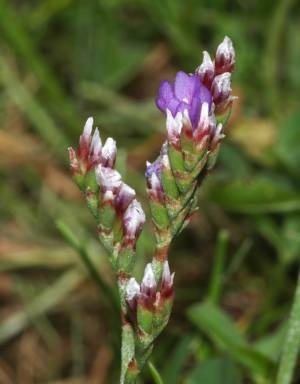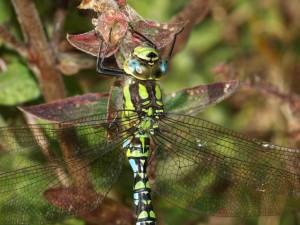Dr Phil Smith’s Wildlife Notes
July 2007
As everyone knows, it has been the wettest summer since records began over 200 years ago. Although, we haven’t suffered the serious flooding problems experienced elsewhere, there have been major effects on our wildlife habitats, especially the sand-dune slacks which are usually dry in mid-summer. Instead, many had water levels more typical of late winter, something I have never previously seen in nearly 40 years of observations. I found four fresh Natterjack Toad spawn strings on 24th July, which may well be a record late date. There was even the (temporary) return of one of the old mossland meres. Jacks Mere, between Jacksmere Lane and Renacres Lane, near Scarisbrick, was reported to be half-a-mile across on 5th July, and had attracted a flock of 337 Black-tailed Godwits.
In the June notes, I referred to the wonderful displays of wild orchids on the sand-dunes. This continued during July with the later-flowering species putting on an equally impressive show. Marsh Helleborines (Epipactis palustris), in particular, flowered in great drifts in many slacks, those around Sands Lake at Ainsdale supporting tens of thousands. Similarly, one of our most important plants, the nationally rare Dune Helleborine (Epipactis dunensis), had a good season, some in the pinewoods growing to over 80cm tall.
A new orchid for the Sefton Coast, the Marsh Fragrant Orchid (Gymnadenia densiflora) was identified from photographs I took at Ainsdale National Nature Reserve and Formby Golf Course in the 1980s and which had previously been thought to be the Common Fragrant Orchid (G. conopsea). This brings us up to 15 orchid species found in recent decades on our sand-dunes.
Reflecting the national fame of our dune flora, a dozen members of the Cleveland Botany Group from Middlesbrough spent several days here in early July, staying in a Southport hotel. They were delighted to see some of our great rarities, such as Isle of Man Cabbage, Baltic Rush and Sharp Club-rush, the latter in its only British locality at Birkdale. Their expertise was invaluable, as they were able to confirm that a single plant found at Birkdale Green Beach last month was not the Common Sea Lavender (Limonium vulgare) but the much rarer Rock Sea Lavender (Limonium binervosum), a first ever record for South Lancashire. Its nearest site is Hilbre Island, which is where the seed may have come from.

The Dragonfly Atlas survey has been a bit of a washout this month but I was pleased to see a couple of Emperor Dragonflies (Anax imperator), our largest species, on the Green Beach on 24th and a Southern Hawker (Aeshna cyanea) patrolling a woodland glade at the National Trust on 11th July. The better weather forecast for August should give these warmth-loving insects a boost, including the several kinds that visit garden ponds. Interested readers can contribute records via the Atlas web-site www.dragonflies.org.uk.

July is usually a quiet month for bird-watching but the keen sea-watchers did well out of the blustery weather, with several sightings of Storm Petrels off Formby Point early in the month and 240 Manx Shearwaters on 14th. Gannets, terns and Arctic Skuas were also reported in good numbers. Rare species included a Glossy Ibis at Marshside from 10th to the end of the month and an American Pectoral Sandpiper there on 22nd – 24th. A remarkable count of 117 Avocets was made at Banks Marsh on 18th.
Meanwhile, a little further afield, a Bittern was booming at Wigan Flashes, a reward for many years of restoration work by Lancashire Wildlife Trust and Wigan Council.
